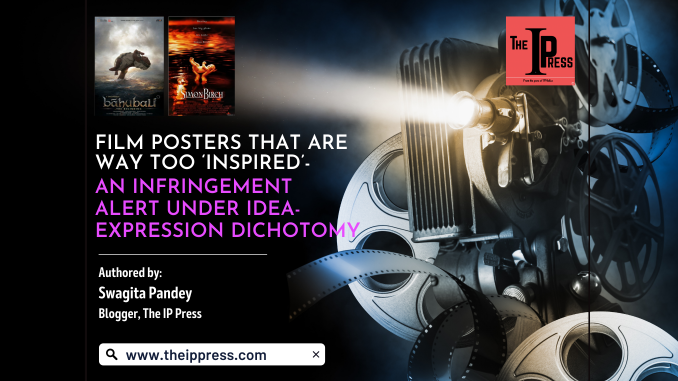
Ideas are as “free as air” but the expression of ideas is Copyrightable.
Copyright axiom is that no one should claim ownership in what one has not created but rather belongs to our common intellect because Copyright protection extends to expressions. The subject matter of copyright includes “original works of authorship”, which includes literary, musical, and dramatic works; pantomimes and choreographic works; pictorial, graphic, and sculptural works; motion pictures and other audio-visual works; and sound recordings.
Lifting scenes, stories, photoshoots/posters, and action scenes from Hollywood movies has become a common trend in the entire Indian film industry in the name of “inspiration”. Sometimes a film’s scenes or its posters perhaps amount to infringement of copyright. But it is not so due to the idea-expression dichotomy which states that only the expression of an idea is protected and not the idea per se.
Two peas in a pod: Copied Posters?! Or Inspiration!
Let us take a look at so-called inspired posters of a few Indian movies in which an imitator has gone beyond copying the “idea” and has borrowed its “expression”.
- Poster of Kangana Ranaut and Rajkummar Rao starrer film “Judgementall Hai Kya” – A Hungarian visual artist named Flora Borsi has accused the makers of the film that the poster of the film bears close similarity to her original artwork.[1] Later, the poster was withdrawn by the team of “Judgementall Hai Kya” due to copyright infringement issues. A Table of similarities between the poster of Judgemental Hai kya and the artwork of Artist Flora Borsi is produced herewith:
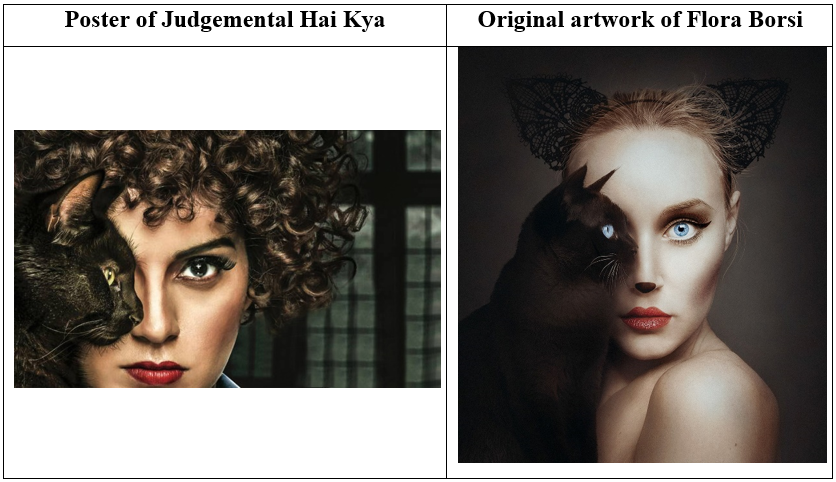
- Poster of ‘Bahubali: The Beginning’ – The poster of the most buzzed movie “Bahubali” was apparently “inspired” by a Hollywood movie titled “Simon Birch”. It was interesting to see that what on earth ceases the makers of Bahubali to copy the ideas and steals the expression of ideas to an extent that the poster of both movies looks exactly similar. A table of similarities between both the posters is produced herein below:
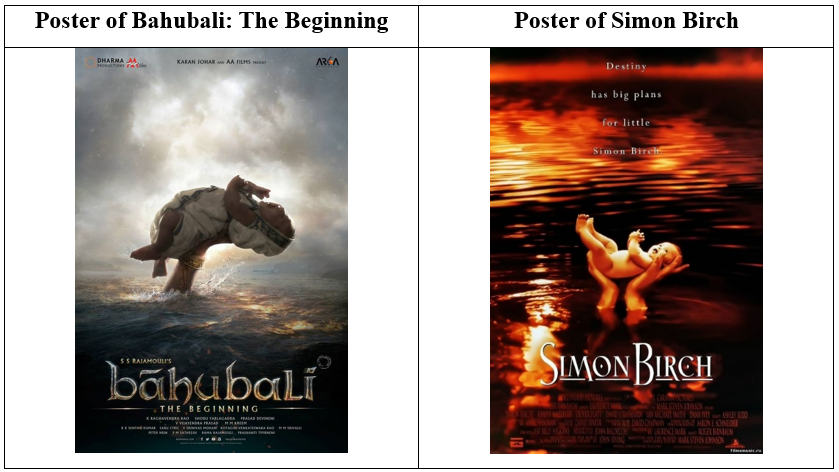
- Posters of Shah Rukh Khan starrer “Dilwale”: Dilwale was a super hit and people still hummed the songs of the movie while the posters of the movie were just another copy of the Hollywood flick “The Best of Me”. The striking similarities of both the posters made the application of the Idea – expression doctrine to produce coherent decisions and just left the viewers with another copycat poster. A table of similarities between both the posters is produced herein below:
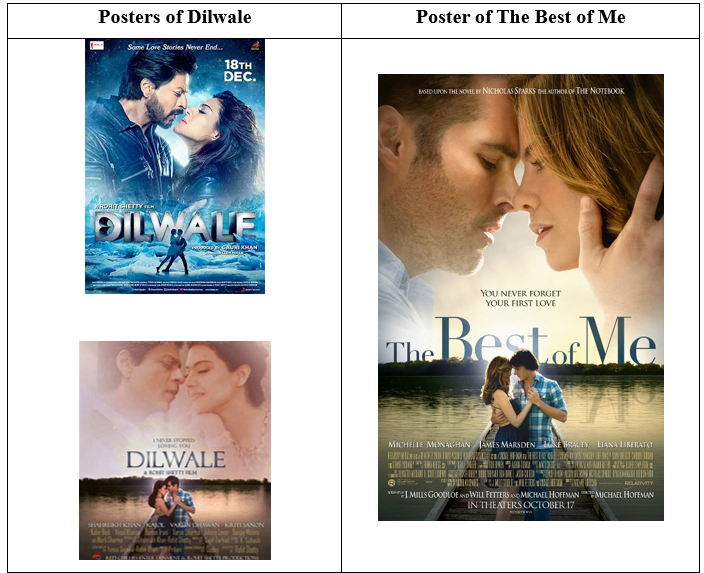
- “Zindagi Na Milege Dobara” but copycat poster milega bar bar[2] – Multi-starrer movie “Zindagi Na Milege Dobara” who gave the audience the Spain holidays goals and how can one forget the beats of song “paint it red” and “the La Tomatina Festival” but the director Zoya Akhtar seems to got a lot “inspired” from the poster of Hollywood movie “Lords Of Dogtown”. Such so-called “inspirations” raise a big question on Idea-Expression Dichotomy as the Copyright Act offers no guidance in deciding what an idea is, resulting in JURISPRUDENTIAL UNCERTAINTY. A Table of similarities between the poster of Zindagi Na Milege Dobara and Lords of Dogtown is produced herein below:
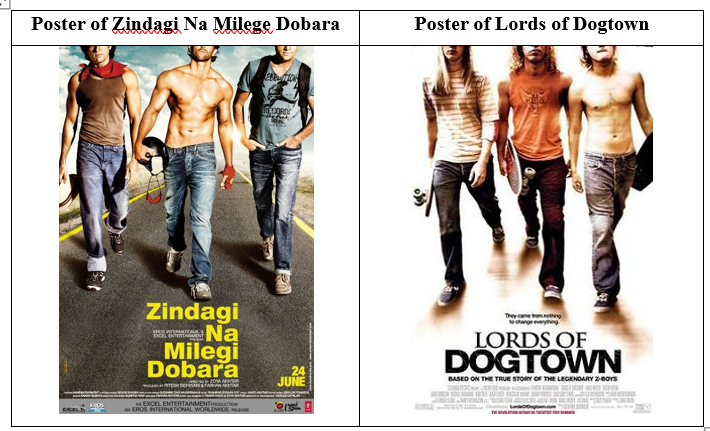
- Aamir Khan’s nude poster from film “PK” – Rajkumar Hirani’s film PK was one of the most buzzed movies of the year 2014 for numerous legal battles and the add on such legal battles online buzz suggests that the poster of the film “inspired” by a Portuguese musician’s Quim Barreiro’s album cover. Both posters bear very close resemblance however copyright gives no exclusive right to the art disclosed protection is given only to the expression of the idea-not the idea itself. Consequently, Rajkumar Hirani’s plea that it’s a matter of entertainment is certainly not enterable under the IP Right of Portuguese musician Quim Barreiros. A table of similarity between both the posters is produced herein below:
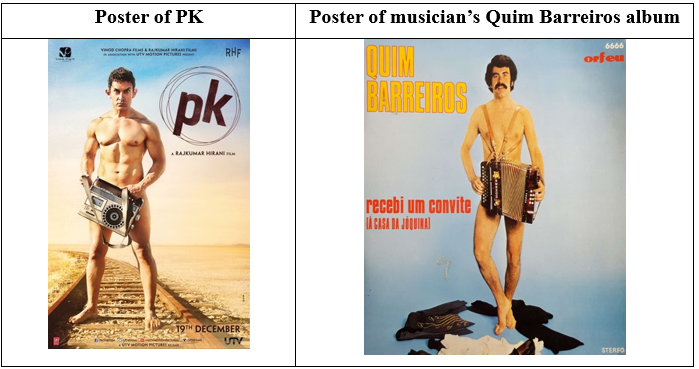
- Poster of film “Murder 3” where copyright was Murder with the knife of “Inspiration” – Another poster joining the list of copyright infringement is Randeep Hooda and Aditi Rao Hydari starrer film Murder 3 which was apparently inspired by the horror comedy movie Jennifer’s Body. A table of similarity between both the posters is produced herein below:
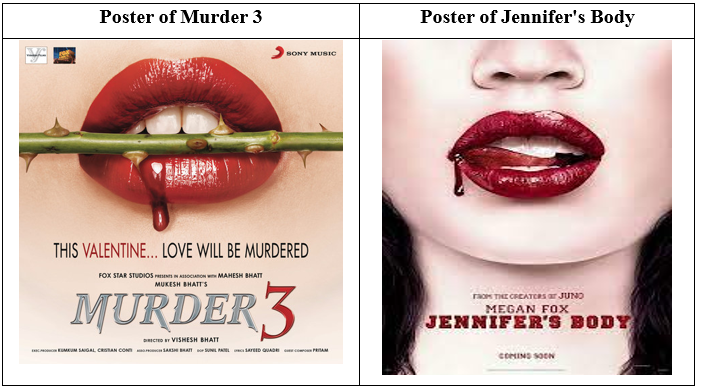
Manifestation of an idea should be protected:
The word “idea” may be used commonly but is rarely used with a clear sense of its connotations. Terms such as “notion”, “concept”, “conception”, “model”, and “ideal” are related to “idea” but differ in their connotations. “Idea” is the most comprehensive of the terms relating to the “representation of something or as a formulation of an opinion, a plan, or a design”[3]. Hence, it is the need of the hour to recognize the difficulty involved in distilling the unprotected idea from the protected expression. Thus, some ideas may be so abstract that they are no longer protected, but past a certain boundary, expressions become sufficiently concrete to constitute infringement.
Let’s us see below some more poster of Indian movies that establish likeness between two posters sufficiently to give rise to an inference, that they took ideas from the other poster and borrowed the expressions under the ambit of so-called “Inspiration”[4].
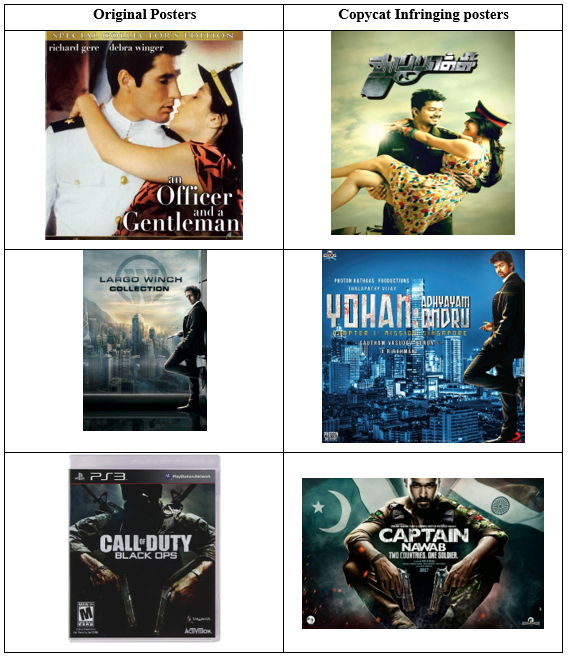
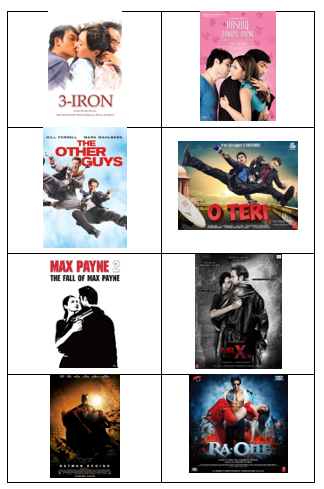
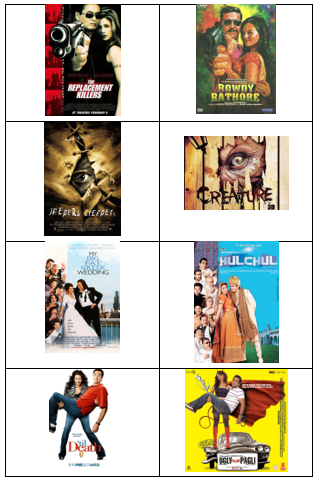
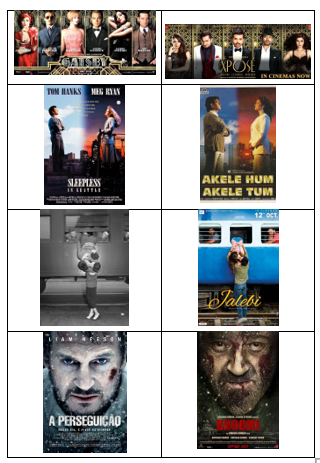
Idea – Expression dichotomy is the central axiom of Copyright Law:
The distinction between protected expressions and unprotected ideas is at the essence of copyright[5]. An idea cannot exist apart from some expression, one may differentiate the form the substance of a writing, equating the substance with the writing’s idea, but any idea must necessarily have an expression. Thus, drawing a distinction between the terms “idea” and “expression” cannot serve as a fundamental determinant for deciding what is protectible under copyright law. Hence, till date the copying some’s expressions such as copying of movie posters are openly and continuously occurring infringement of expression.
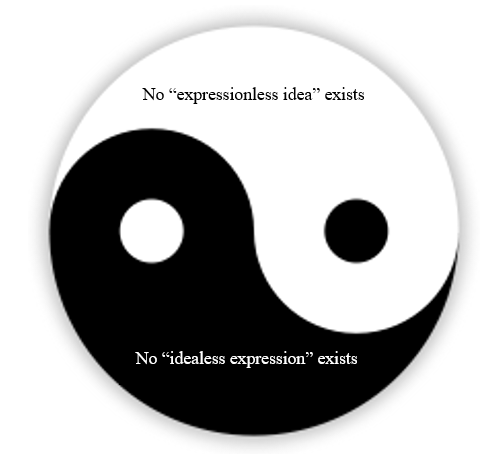
It seems that the issue of a dichotomy of ideas and expressions was not clearly envisioned till date. The justification for protecting expressions but not ideas rests in balancing the interests of society in the free flow of information against the property interests of the original owner. The Idea -expression dichotomy have four different meanings[6]:
- The important distinction between the subject matter of a work and protectible expressions in the work;
- The distinction between unprotectable and protectable expressions;
- A distinction between the subject matter of a work and unprotected expressions;
- A distinction from earlier times between disembodied ideas and any embodiment of them
Idea-Expression Dichotomy encourages creativity and prevents monopoly in the creative industry:
“If the same idea is being developed in a different manner similarities are bound to occur. The determining factor is whether or not these similarities are on the fundamental or substantial aspects of the mode of expression adopted on the copyrighted work.”
The idea/expression distinction, although an imprecise tool, has not been abandoned because we have as yet discovered no better way to reconcile the two competing societal interests that provide the rationale for the granting of and restrictions on copyright protection, namely, both rewarding individual ingenuity, and nevertheless allowing progress and improvements based on the same subject matter by others than the original author.
[1] Hindustan Times : Article titled “Judgementall Hai Kya poster plagiarised my art work, claims Hungarian artist Flora Borsi, shares proof” dated 30th July 2019 available at the link – https://www.hindustantimes.com/bollywood/judgementall-hai-kya-poster-plagiarised-my-art-work-claims-hungarian-artist-flora-borsi-shares-proof/story-RpBlxkMao1hbfllTE6ORnO.html
[2] Rediff.com: Article titled “Zindagi Na Milege Dobara poster: Copy cat alert!” dated 08th April 2011 available at the link – https://www.rediff.com/movies/report/zindagi-na-milegi-dobara-poster-copied/20110408.htm
[3] Amaury Cruz, What’s the Big Idea behind the Idea-Expression Dichotomy?- Modern Ramifications of the
Tree of Porphyry in Copyright Law, 18 Fla. St. U. L. Rev. 221 (1990).
[4] India Today Article titled “Not just Judgementall Hai Kya. 9 film posters Bollywood copied from others” available at the link – https://www.indiatoday.in/movies/photo/not-just-judgementall-hai-kya-9-film-posters-bollywood-copied-from-others-1575161-2019-07-30/1 .
[5] Harper & Row Publishers v. Nation Enters., 471 U.S. 539, 589 (1985) (Brennan, J., dissenting).
[6] Richard H. Jones, The Myth of the Idea/Expression Dichotomy in Copyright Law, 10 Pace L. Rev.
551 (1990).

Leave a Reply